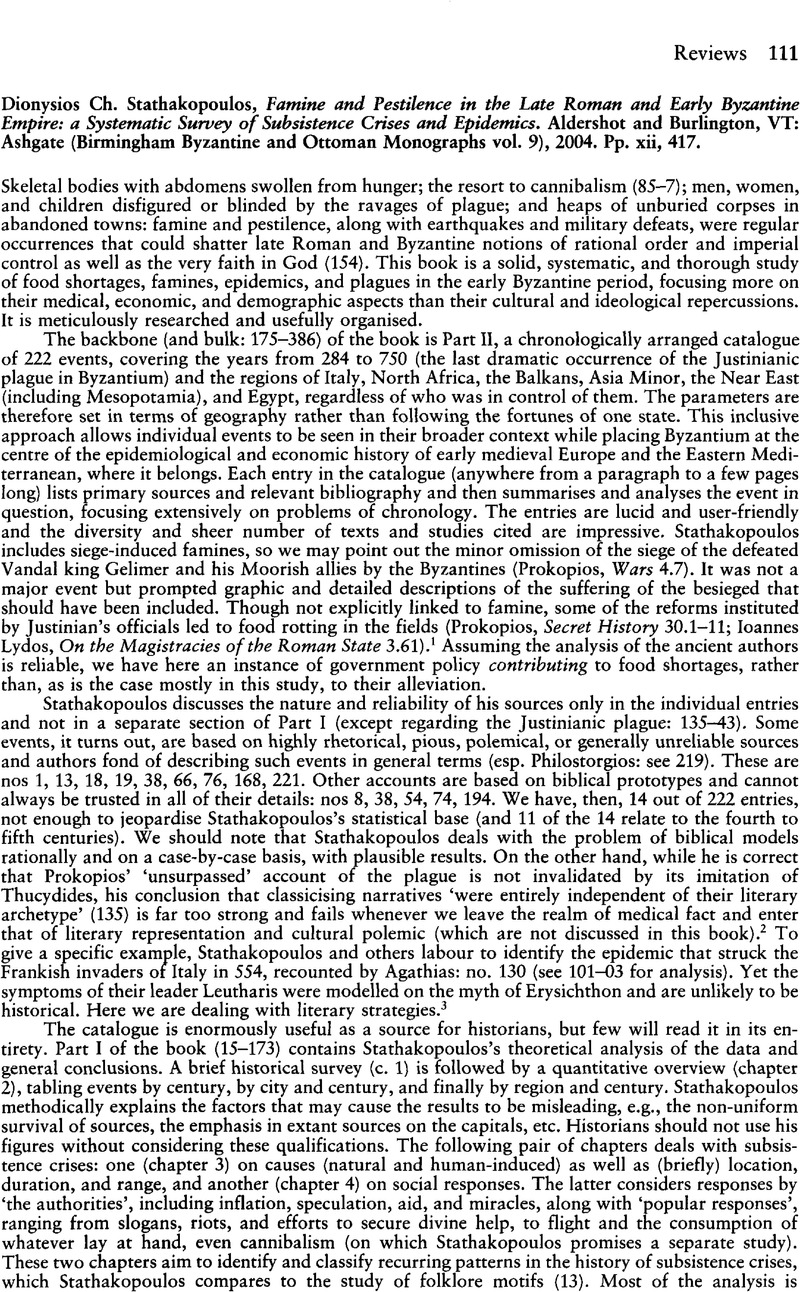Article contents
Dionysios Ch. Stathakopoulos, Famine and Pestilence in the Late Roman and Early Byzantine Empire: a Systematic Survey of Subsistence Crises and Epidemics. Aldershot and Burlington, VT: Ashgate (Birmingham Byzantine and Ottoman Monographs vol. 9), 2004. Pp. xii, 417.
Review products
Published online by Cambridge University Press: 26 April 2016
Abstract

- Type
- Book Reviews
- Information
- Copyright
- Copyright © The Centre for Byzantine, Ottoman and Modern Greek Studies, University of Birmingham 2005
References
1 See A. Kaldellis, ‘Identifying dissident circles in sixth-century Byzantium: the friendship of Prokopios and Ioannes Lydos,’ Florilegium 21 (2004) 1-17, here 10.
2 See Kaldellis, A., Procopius ofCaesarea: Tyranny, History, and Philosophy at the End of Antiquity (Philadelphia 2004) 26 ff., 210-13CrossRefGoogle Scholar, for classicism and the plague.
3 See A. Kaldellis, ‘Things are not what they are; Agathias Mythistoricus and the last laugh of classical culture,’ Classical Quarterly 53 (2003) 295-300.
4 Mayor, A., Greek Fire, Poison Arrows, and Scorpion Bombs: Biological and Chemical Warfare in the Ancient World (New York 2003).Google Scholar For Varro's protobacteriological theories, see 114.
5 See A. Cameron, ed., Fifty Years of Prosopography: The Later Roman Empire, Byzantium and Beyond (The British Academy 2003 = Proceedings of the British Academy v. 118).
6 Some minor errors: John of Lydia is written throughout John of Lyda (183, 265, 267, 287), probably a global ‘replace’ command gone wrong; the first sentence of no 52 is incomplete; and 'siege' on 188 (an obsolete usage in English) should be ‘see’.
- 1
- Cited by


